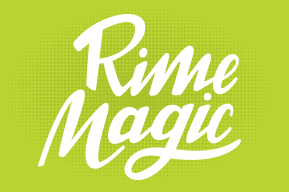When we refer to struggling readers, who are we talking about? Are we talking about all of the students who are not reading at or above our grade level standards? Are all of them struggling? Does struggling mean that learning to read feels hard for them?
In my many years of teaching in public schools in California – as a classroom teacher, reading specialist and resource specialist supporting students who have qualified for special education – I have worked with students of all ages and spent many years teaching reading to students who find reading challenging. During those years I found ways to make sure my students felt successful as they improved each day in their reading proficiency.
More recently, I have had the privilege of visiting classrooms in schools and districts all over the California Bay Area and have observed interesting differences in the way students who are reading “below grade level” feel about their school experience. Some classrooms are filled with books, shelves and shelves of books, displayed in ways that invite students to explore. In these classroom, teachers are reading to and with their students, conferring with them about what they are reading, meeting with small groups, talking with them about what good readers do when they read, and conducting lively discussions about books and stories and exciting content. In these classrooms, the books that are easiest to read are often leveled so that students can be reading independently and with partners in books that are not only physically accessible to them but are accessible because they are “just right,” with a few challenges but not too many. In classrooms such as these, it is rare that I see a struggling reader.
In other classrooms I see workbooks, everyone reading (or at least trying to follow along) in basal readers that are developed for a particular grade level, lots of whole-class phonics lessons based on the mastery of sequential skills rather than individual student needs, and very few trade books or books of any kind. In these classrooms, I do see struggling readers, students pretending to read, students attempting to copy from another student’s worksheet, students acting out, waiting for recess, or in some way disengaged. I see students who don’t feel good about themselves or about school, yet attempting to do what the teacher is asking. I see teachers wondering why many of their students are not doing well on assessments, and do not seem to enjoy reading. Many of these teachers are doing their best to help their struggling readers and are aware that workbook pages and intensive phonics lessons are not working for these students.
From Struggle to Bookjoy
Rather than teaching isolated phonics skills in a published sequence, we need to give our students plenty of practice in the act of reading, right from the start! If a school is using a basal reader and students are all reading the grade-level text regardless of their reading levels, then I suggest incorporating the TO WITH BY method for students who struggle with print. Read a short selection TO students along with discussion, then read the same selection WITH them a time or two or three (their choice), and finally they can read it with a partner (BY). The repetition will actually make the reading selection more and more predictable. Vocabulary and content will become familiar and the students’ memory will support them in figuring out the more challenging words on the page. Their confidence will begin to rise and before long they will join their peers in reading material closer and closer to grade level.
The next project is to begin to fill classrooms with interesting trade books and to start a leveled book collection. I have found that it’s fairly cost effective to bring in leveled books for primary classrooms, a few sets each year. Even if schools start with just a few in a first-grade classroom, they are read over and over by children who are so excited to start reading. Recently I visited a kindergarten summer school classroom filled with students who were not yet reading and about to enter first grade in the fall. The classroom was completely devoid of books that were easy enough for emerging readers. I brought in 24 level A and B books, shared them with the class, and when I returned three weeks later, they were excitedly reading them to me and asking for more! It doesn’t take much to begin the process even when there is no access for teachers to staff development in excellent literacy practices.
